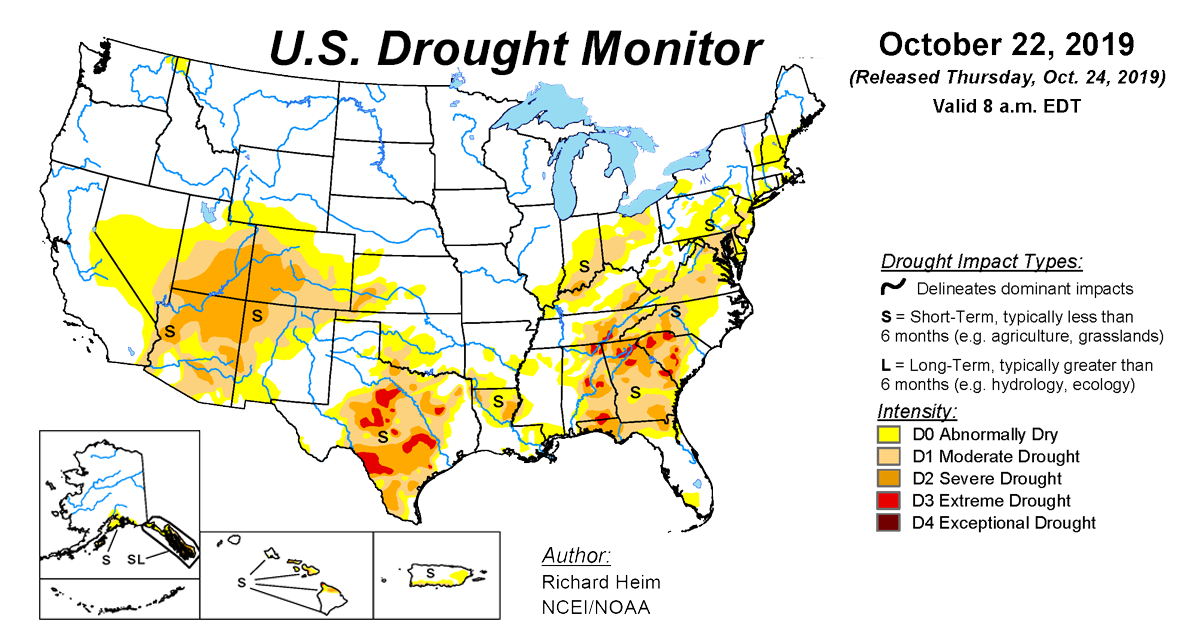
According to the October 22, 2019, U.S. Drought Monitor, moderate to extreme drought covers 18.4% of the United States including Puerto Rico, a slight decrease from last week’s 18.5%. The worst drought categories (extreme to exceptional drought) decreased from 1.2% last week to 0.8% this week.
This week, a low-pressure and frontal system draped across the Gulf and East Coasts. Tropical Storm Nestor and its remnants moved across the Southeast and then up the East Coast at mid-week. Another front moved across the South and approached the East Coast as the week ended. This combination of synoptic systems dropped several inches of rain across the drought areas of eastern Texas and from the Mississippi River to the East Coast. Meanwhile, several Pacific frontal systems brought precipitation to the Pacific Northwest, while the Southwest to southern High Plains continued dry.
Drought and abnormal dryness contracted across parts of the Pacific Northwest and southern Plains, as well as much of the Southeast, Ohio Valley, and Mid-Atlantic to Northeast where heavy precipitation fell. Drought and abnormal dryness expanded in the Southwest and parts of the southern and central Plains, as well as northeast Puerto Rico, where precipitation deficits mounted. Contraction outweighed expansion this week, resulting in a slight decrease of the national drought area compared to last week.
Abnormal dryness and drought are currently affecting nearly 140 million people across the United States including Puerto Rico—almost 45.0% of the population.

The full U.S. Drought Monitor weekly update is available from Drought.gov.
In addition to Drought.gov, you can find further information on the current drought as well as on this week’s Drought Monitor update at the National Drought Mitigation Center. See their recent news releases.
The most recent U.S. Drought Outlook is available from NOAA’s Climate Prediction Center and the U.S. Department of Agriculture provides information about the drought’s influence on crops and livestock.
For additional drought information, follow #DroughtMonitor on Facebook and Twitter.



